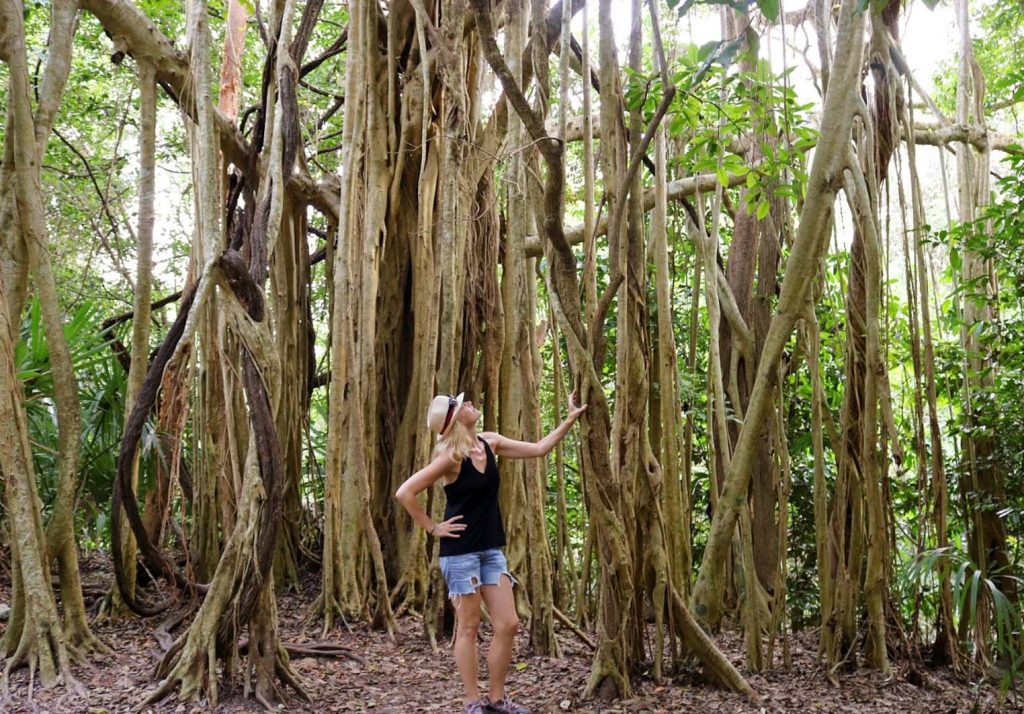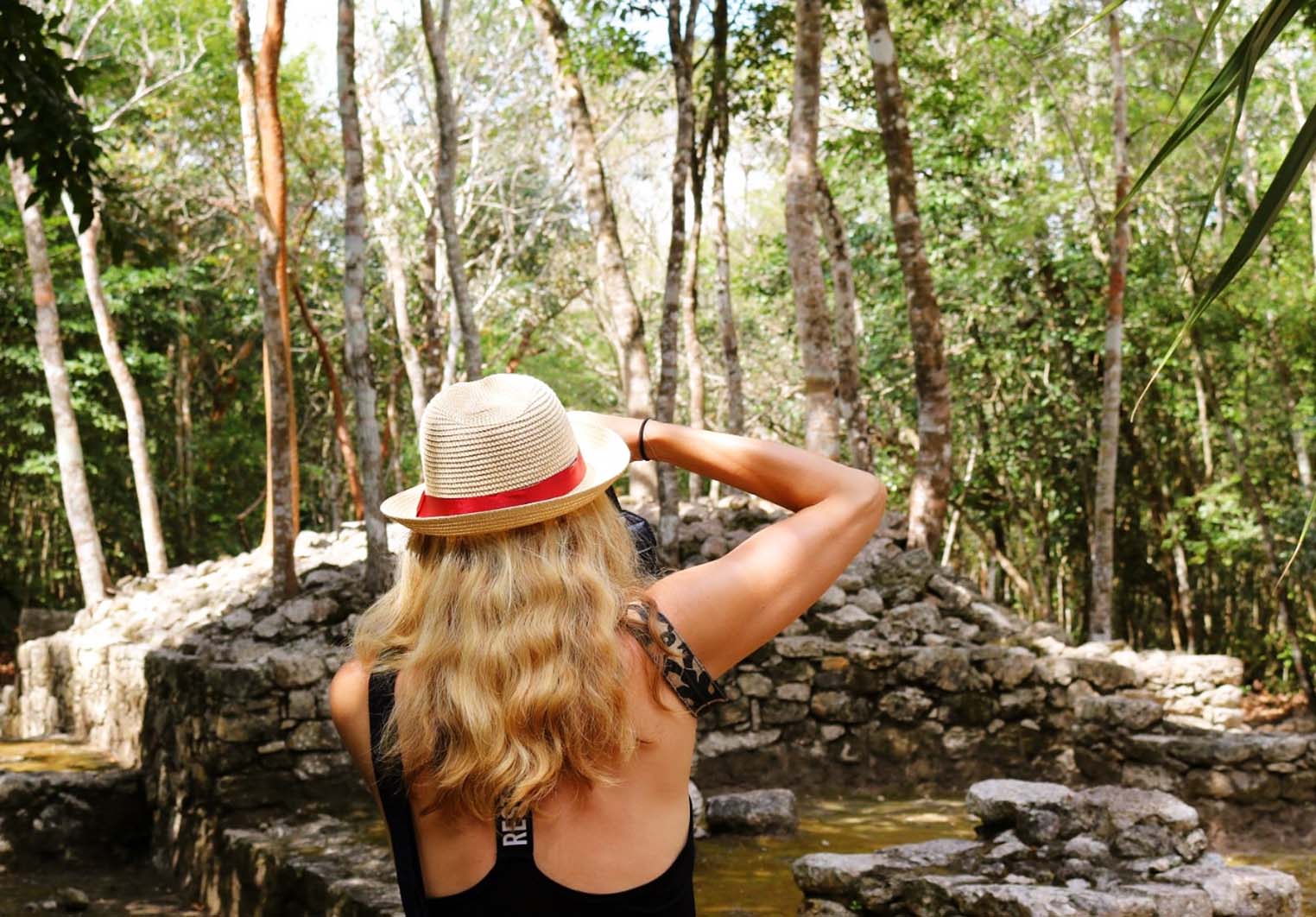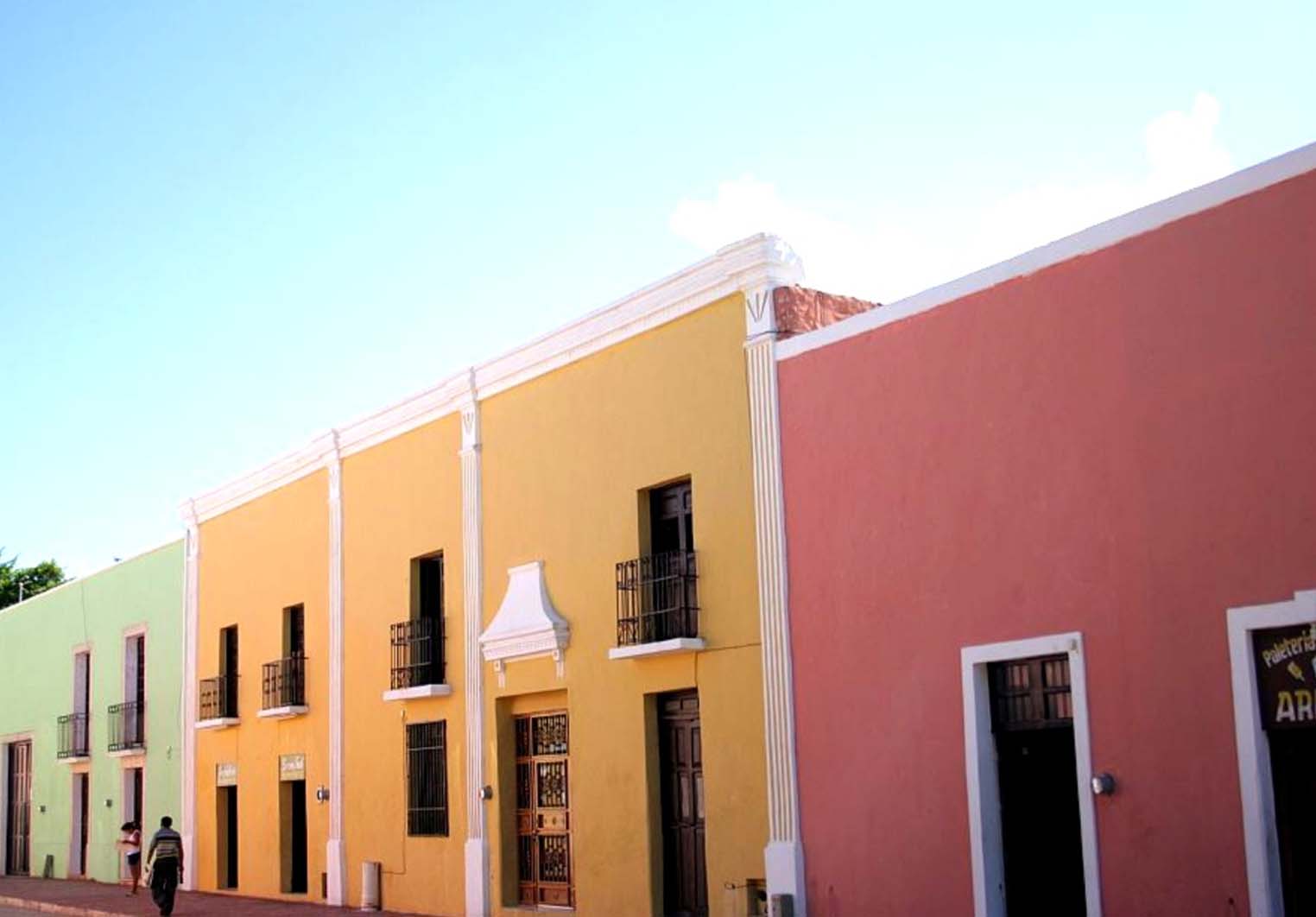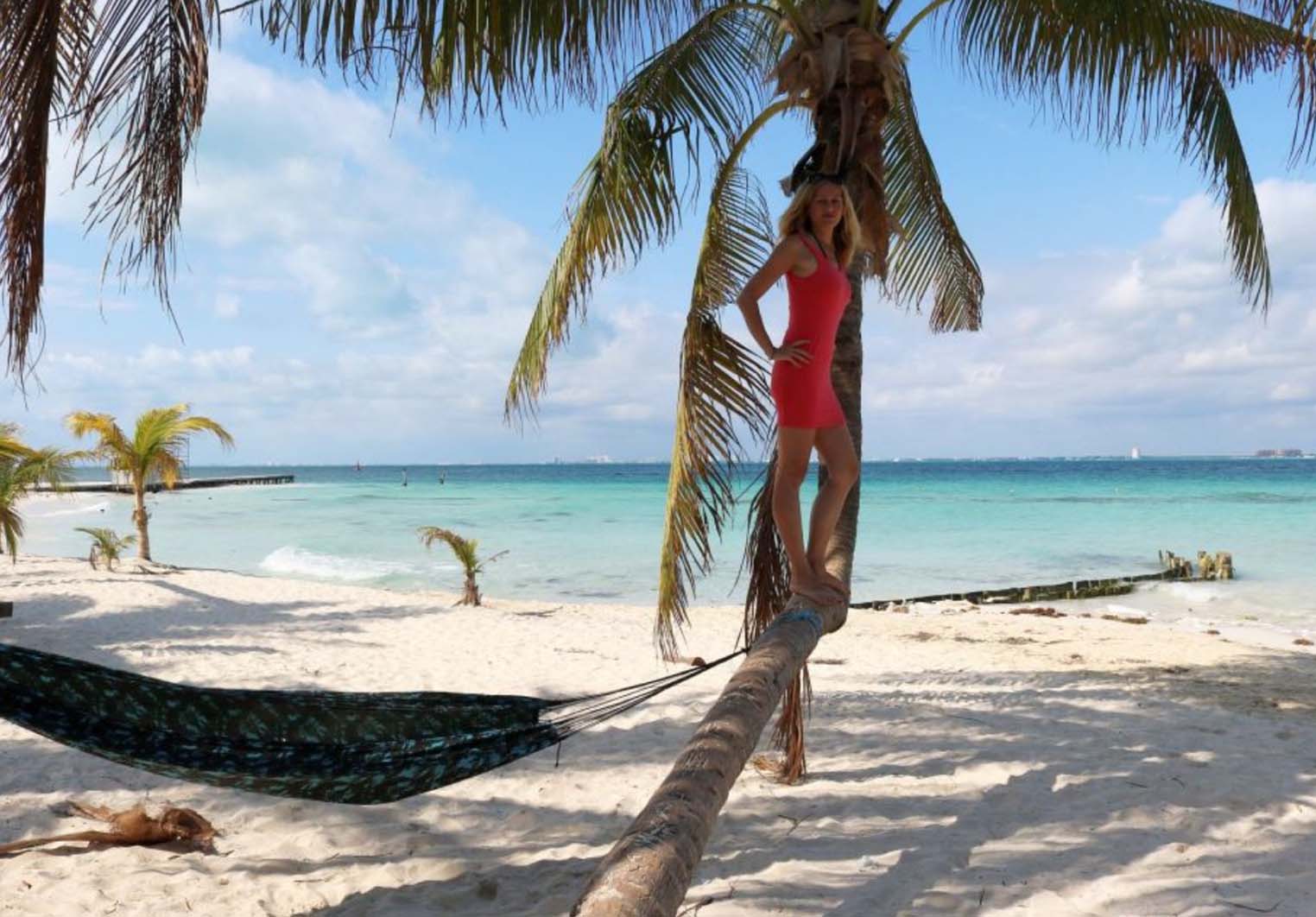I have arrived in my favorite place in Mexico, and my job is to introduce you to the fusion of Mexican culture, cuisine, and landscapes as much as possible. Let me share with you a better way to travel along the Yucatan Peninsula route.
Why choose the Yucatan Peninsula/Quintana Roo? This region of Mexico is a southeastern peninsula that stretches along the Caribbean Sea coastline all the way to Belize. It’s my favorite place in the country, a destination I can return to time and time again because of my deep knowledge of this area. Because of my familiarity with this region, I can easily plan a Yucatan Peninsula road trip itinerary.
I know that I can show you the charm of Mexico in the Yucatan Peninsula, with rich Mayan culture experiences at historical sites like Chichen Itza, Tulum, and Uxmal. You can explore beautiful Spanish colonial towns like Valladolid, Campeche, and Izamal. Enjoy the dreamy beaches of Playa del Carmen, Tulum, and Mahahual. There are dozens of cenotes – natural freshwater sinkholes – each with something unique to offer. Swim alongside sea turtles and flamingos, observe wildlife, and make plenty of stops at taquerias along the way.
Planning the Perfect Yucatan Peninsula Road Trip
As I began to meticulously plan my dream Yucatan Peninsula road trip, breaking it down day by day, I realized that I couldn’t fit in all the places I’d ideally want to visit.
Yucatan Peninsula Road Trip for Those with More Time (Ten Days):
If you have more time on your hands, say ten days, I recommend opting for a slightly longer route for your Yucatan Peninsula road trip. This extended itinerary includes the yellow towns of Izamal and Las Coloradas, the Pink Lagoon near Rio Lagartos (complete with flamingos if you visit at the right time of year!), and the chance to swim with whale sharks (July to October) or explore like we did on Holbox Island. Now, if you’re wondering why I didn’t include Merida in the second option (it’s not far from Izamal), it’s because I wasn’t particularly drawn to Merida when I visited a few years ago. But that’s just my personal opinion, and I know many people would disagree, including Merida for sure.
Back to our Yucatan Peninsula road trip itinerary. I chose this route to showcase some of Mexico’s most beautiful attractions: extraordinary Mayan ruins, stunning beaches, and authentic Mexican countryside living.
Our first stop was in a sleepy little fishing village that exemplifies Mexican country life. We rented a car at Cancun Airport for a mere $9 per day and headed straight south to Carmen Beach.
En route, along the main highway to Playa, you’ll come across Puerto Morelos. While it’s far from being a tourist hotspot, with some luxury apartment buildings beneath the beach, its core remains mostly untouched by the mass tourism of Playa or Cancun. Fishermen sell their catches right on the beach, and colorful little fishing boats dot the shoreline. There are no Senor Frogs or steakhouse chains here; instead, mom-and-pop shops dominate the dining scene, if you can even call it that.
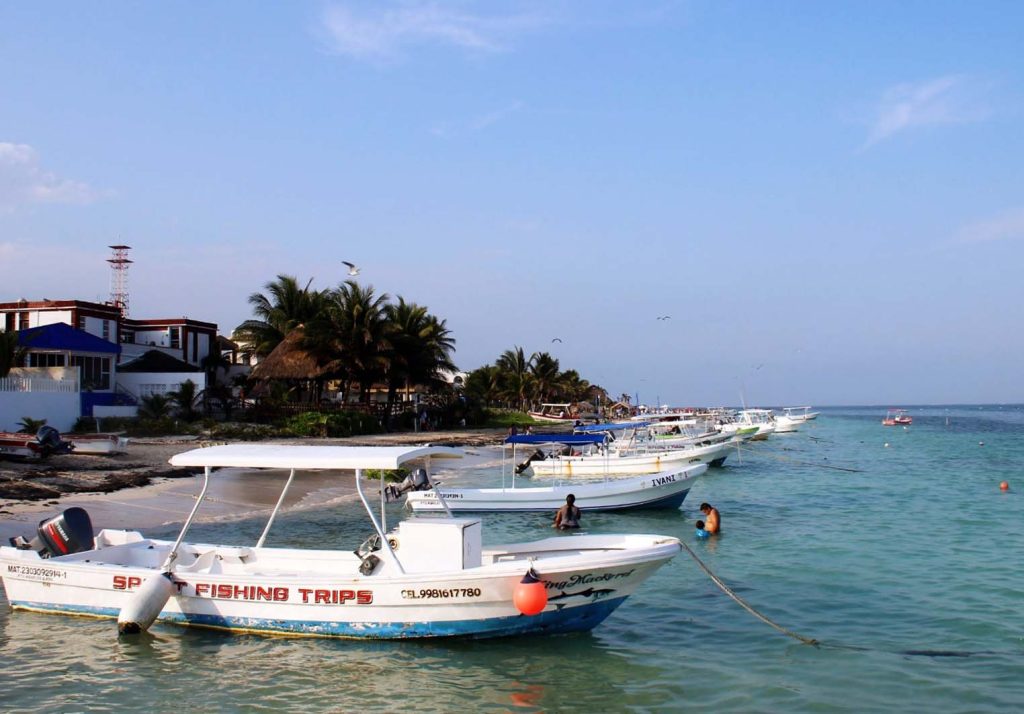
Departing from Puerto Morelos, it takes just 45 minutes to reach Playa del Carmen, where we stayed for a few nights during our Yucatan Peninsula road trip. Playa del Carmen is an ideal base for enjoying beach time and exploring several cenotes, as it’s just a short drive away from Playa, where you’ll find many of these natural sinkholes.
You might be wondering, what exactly are cenotes? Cenotes are underwater sinkholes or underground caves formed when the limestone bedrock collapses, exposing groundwater underneath. They come in various shapes, some covered, and some open-air, with over 7,000 of them scattered throughout the Yucatan Peninsula. In fact, they are unique to this region of Mexico and are part of a vast underground network of rivers and caves, with many yet to be explored. The common thread among those that have been explored is their crystal-clear, turquoise waters and often a vast underwater cave system hidden from view beneath the typically circular, open cenote entrances. In short, they are perfect for snorkeling and diving, making them a must-visit on any Yucatan Peninsula journey.
In an effort to incorporate as many of these sinkholes into our road trip, I introduced Miss G to various types of cenotes: covered cenotes, underground cenotes, and open-air cenotes. Our first cenote was an open-air cenote south of Playa, known as Jardin del Eden or Eden Garden. In my opinion, the name is quite fitting, as this open cenote is surrounded by lush greenery and trees, and you can see all the way down to its bottom. It’s one of the largest cenotes I’ve ever seen, and what you see from above isn’t even the entirety of it: we occasionally spotted groups of divers popping up from the water, which left me wondering just how extensive the underwater cave system here is.
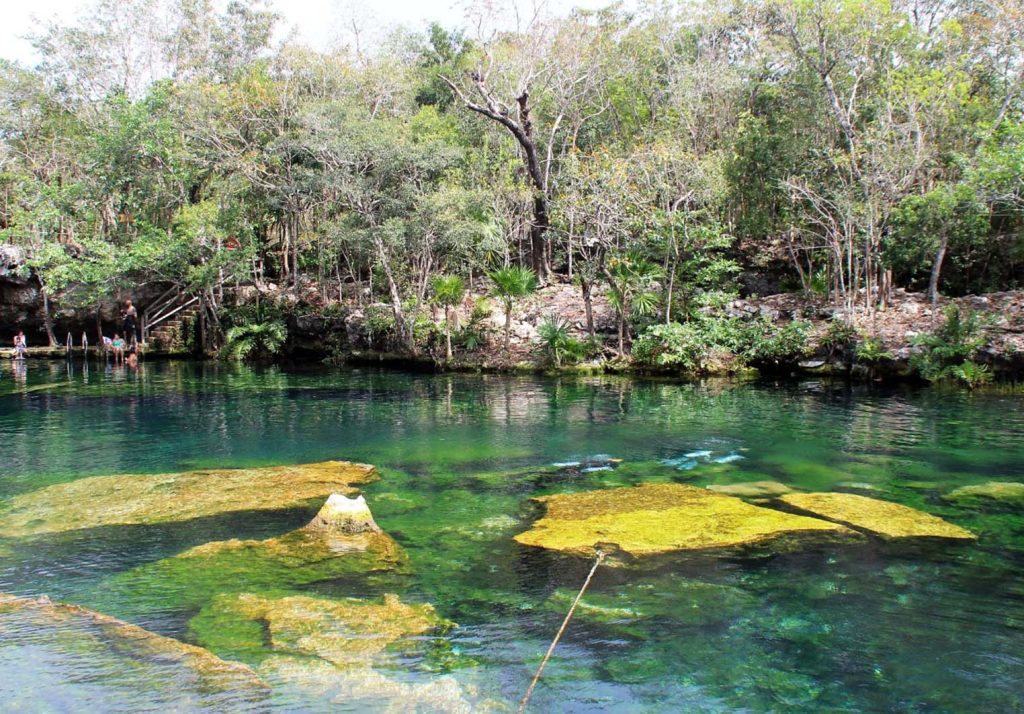
On our second day in Playa, we decided to spend the day in the town itself since the beach in Playa was worth some of our time too. I must admit, I’m not the biggest fan of Playa del Carmen itself, simply because it’s quite Americanized and tourist-centric. However, I do know that many others enjoy it and return to Playa year after year. The bustling Fifth Avenue is the main street that runs parallel to the beach in Playa, lined with shopping centers, souvenir shops, and restaurants. Many of these restaurants don’t even serve Mexican cuisine but offer European or North American fare at American prices. While I don’t mind taking a stroll, we didn’t spend too much time in Playa itself during our Yucatan Peninsula road trip.
Our hotel, the Hyatt Resort, is located on the best stretch of Playa Mamita Beach. I have to confess that I found it hard to leave the beautiful infinity poolside sun loungers. Can you blame me?
I know that other travelers may spend a week or more in Playa, but some of my favorite spots along the coast, like Riviera Maya, are actually located further south. Our next stop was one of them: Akumal.
Akumal Beach:
This seaside town is located about 30 minutes south of PdC and approximately 25 minutes north of Tulum. Once a hidden gem, the secret is now out. I had never seen the beach this busy on previous visits, and there’s a good reason for it: there are sea turtles grazing on seagrass along the shoreline, and you can swim with them. A few years ago, you’d only see a few tourists floating face-down in the water, watching the sea turtles. This time, the entire tour group was in the water, easily distinguishable by their bright yellow, orange, or red life jackets.
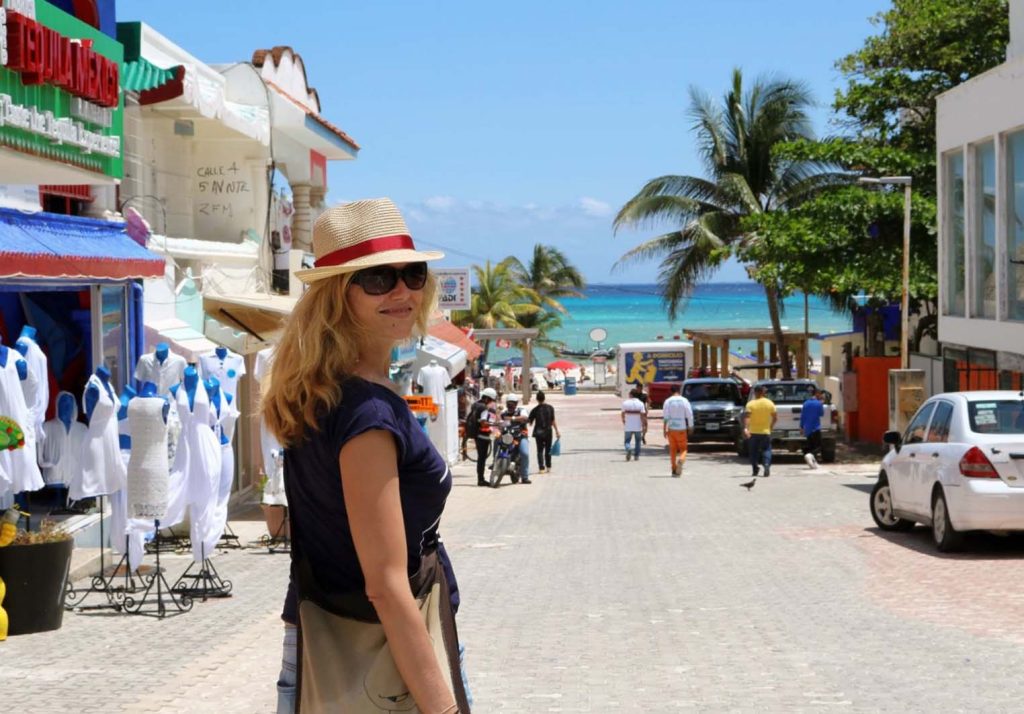
As we walked to the beach, a group of people approached us, trying to sell us an expensive snorkeling tour. I wondered when it became necessary to pay for this, as far as I knew, access to the beach was free. So, be cautious: don’t let anyone convince you that you need to join a tour. You don’t need that! All you need is a snorkel and a mask. Later, I read in an article that due to the increasing number of tourists, Akumal is striving to maintain sustainable tourism, and the increased number of visitors is putting stress on the sea turtles. I wasn’t surprised by this because there were a lot of people in the water. Akumal Sea Turtles I apologize for the poor quality of these photos, but it’s just to give you an idea of how close you get to the turtles. Be sure to bring a good underwater camera, and an additional pro tip is that disposable cameras won’t cut it in such conditions.
I hope officials can find a way to protect the sea turtles and make tourism here more sustainable because with or without the turtles, Akumal is one of the most beautiful areas along the Riviera Maya, and I wouldn’t want to see this little paradise destroyed. Akumal Beach Pelicans While the sea turtles are popular on the beach closest to the street, if you walk further along the bay away from where the turtles are, you can still find a secluded stretch of beach here. Mexican Akumal Beach From Akumal, we continued south, and after half an hour, we reached Tulum. Tulum was one of the stops on our Yucatan Road trip that I was particularly excited about because here, we would visit the first (of three) Mayan ruins I had planned for our Yucatan Road trip.
I had been to Tulum a few years ago, and while the ruins there might not be as awe-inspiring as Chichen Itza or Palenque, their spectacular cliff-top setting overlooking the turquoise Caribbean Sea sets them apart from all other Maya ruins in Central America. Tulum Ruins The Maya civilization thrived in what is now the region of Mexico, Belize, Honduras, Guatemala, and El Salvador, and it is considered one of the most advanced civilizations of its time (AD 250 – AD 900). Even today, you can find the remnants of their cities, temples, religious centers, and infrastructure throughout Central America, with approximately 20 Maya ruins in the Yucatan Peninsula alone. Tulum Ruins Yucatan Peninsula Tulum was primarily a port for the larger Maya city of Coba, which will be the next set of ruins we plan to visit. Tulum is believed to have had a population of 1,000 to 1,600 residents, while Coba’s population was estimated at around 50,000 people, giving you an idea of the scale of this site. There’s only one main structure here, El Castillo, a 25-foot (7.5-meter) high pyramid.
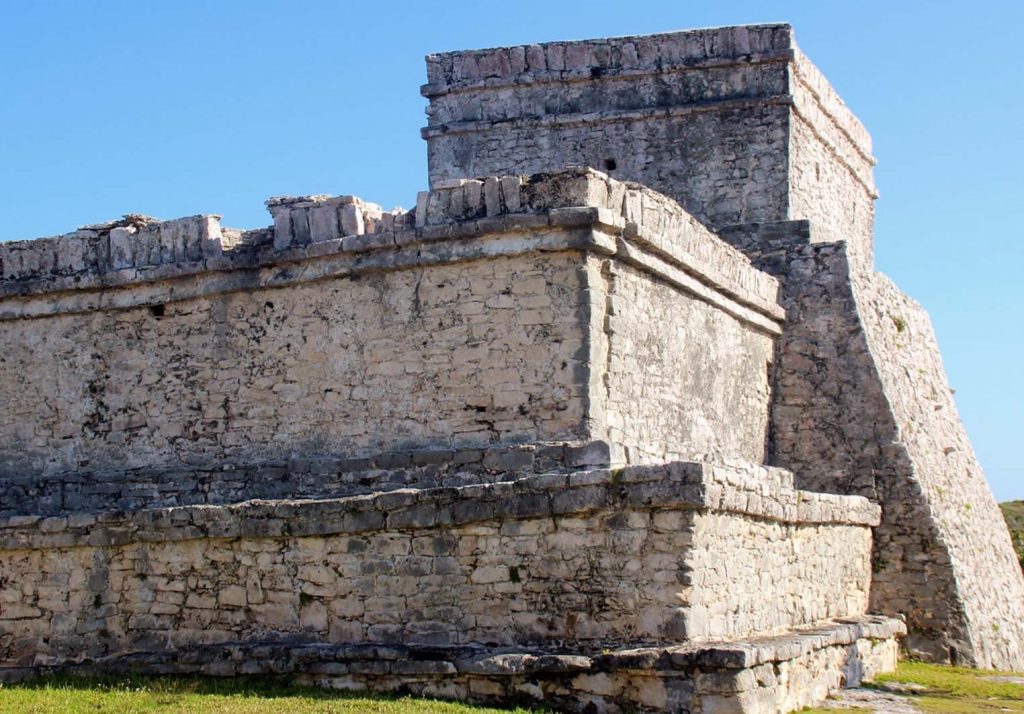
As Tulum is close to Playa del Carmen and Cancun, it’s one of the most popular Mayan ruins, and it’s always crowded. Knowing this, I was determined to arrive at dawn… well, maybe not that early, but we got to the entrance just past 8 AM when it opened, and we obtained our tickets without having to wait in line. We strolled through the ruins with hardly any other tourists around. Tulum Mexico Ruins As the sun began to beat down on us, we were ready to move on. Our timing was perfect: as we walked back to our car, several massive tour groups were entering the ruins, with no fewer than 20 large buses unloading tourists one after another in the parking lot. If you want Tulum without the crowds, be sure to go there early. Tulum Ruins We didn’t head back to the hotel; instead, we drove straight to the beautiful Tulum beach — undoubtedly one of the most beautiful beaches along the Riviera Maya. It’s a vast stretch of beach with powdery white sand as far as the eye can see, and the water here has an incredible range of blues. Tulum Beach We found a beach bar, sat on beach chairs, and didn’t leave our spot the entire day until dinnertime, which led us to Antojitos La Chiapaneca, a local torta shop in the village (not on the beach) – highly recommended, it exceeded our expectations. It was so good that we went back the next evening, despite Tulum having dozens of dining options. But does anything beat those seven-peso tortas? Tulum Tortas We could have easily spent another day on Tulum’s beach, but the following day was reserved for more cenotes. After swimming in open cenotes, we wanted to see a different type of cenote — the covered or partially covered ones. After some research, I found that Gran Cenote and Cenote Dos Ojos are closely connected, but eventually, I chose Gran Cenote.
Dos Ojos is a cenote with a roof, seemingly the most popular one in Tulum, but I found the entrance fee quite high (MXN 200 if you bring your own equipment and are prepared to walk 3 kilometers to reach the cenote, or MXN 500 if you cycle to the cenote). That fee covers the cenote, a guide, snorkeling equipment, and lights. I knew we’d be visiting several covered cenotes later in Valladolid. Tulum Gran Cenote Gran Cenote is the perfect blend of covered and open cenotes, with a lower entrance fee (MXN 150), allowing us to add another cenote to our cenote tour. Gran Cenote didn’t disappoint: crystal-clear waters, a large swimming area, and a covered section that you can swim through to reach another open section of the cenote. We snorkeled, marveled at the underwater rock formations and stalactites hanging from the cave’s ceiling, sunbathed on wooden decks, and watched sea turtles swimming in a separate area. Mexico Gran Cenote After a few hours, we were ready to check out another cenote, and then we headed to Coba, not far from the cenote. I had read that this cenote is mainly frequented by Mexican tourists and costs only 50 Mexican pesos. When we arrived, there were only two other people around, and later, three girls came there to shoot a music video, and that was it — we had Zacil-Ha to ourselves. Tulum Cenote Zacil-Ha This cenote is much smaller than Gran Cenote, which is a nearly perfect circular swimming pool from above, at least. After a while, we saw several divers resurfacing, then descending again, disappearing for quite some time, making me guess that there must be a fairly extensive underwater cave system here. Zacil-Ha Cenote Zacil-Ha’s best part is the zipline directly above the cenote. You can experience an exhilarating journey, eventually letting go from a rather high height into the water. Don’t expect a proper zipline with safety harnesses — it’s essentially just a handle you grab onto and release when you reach the center of the cenote. Definitely worth the 10 pesos we paid.
